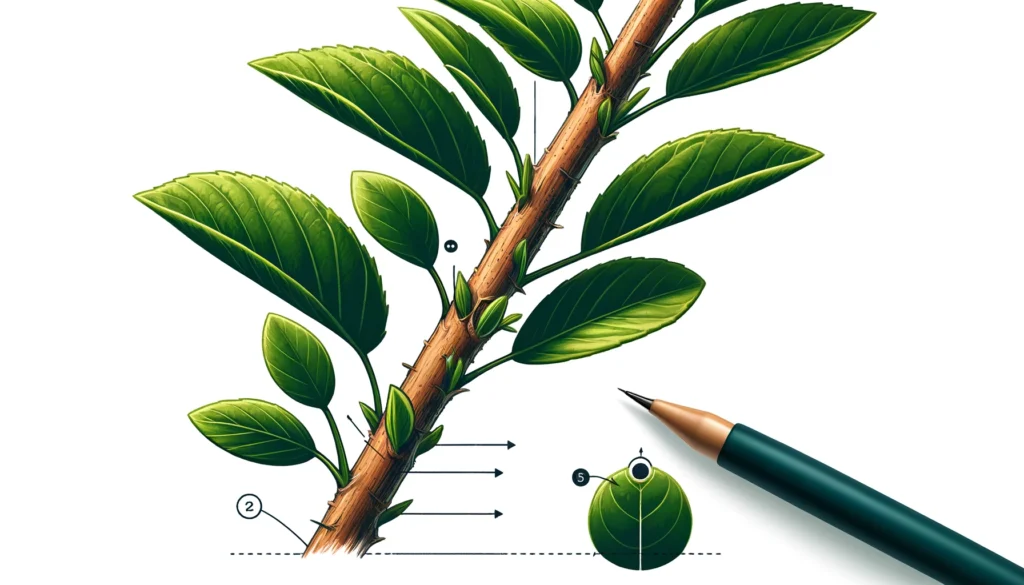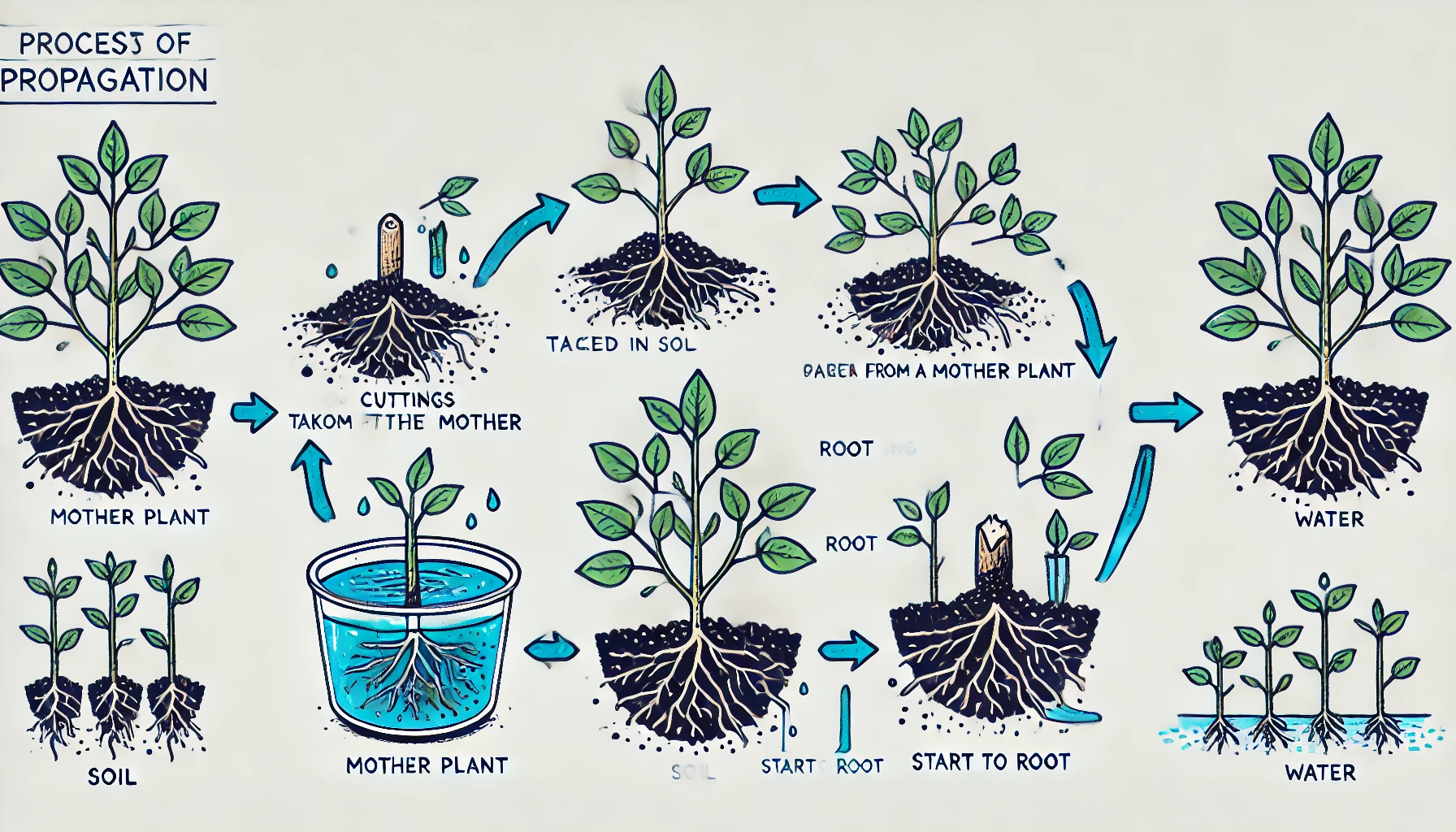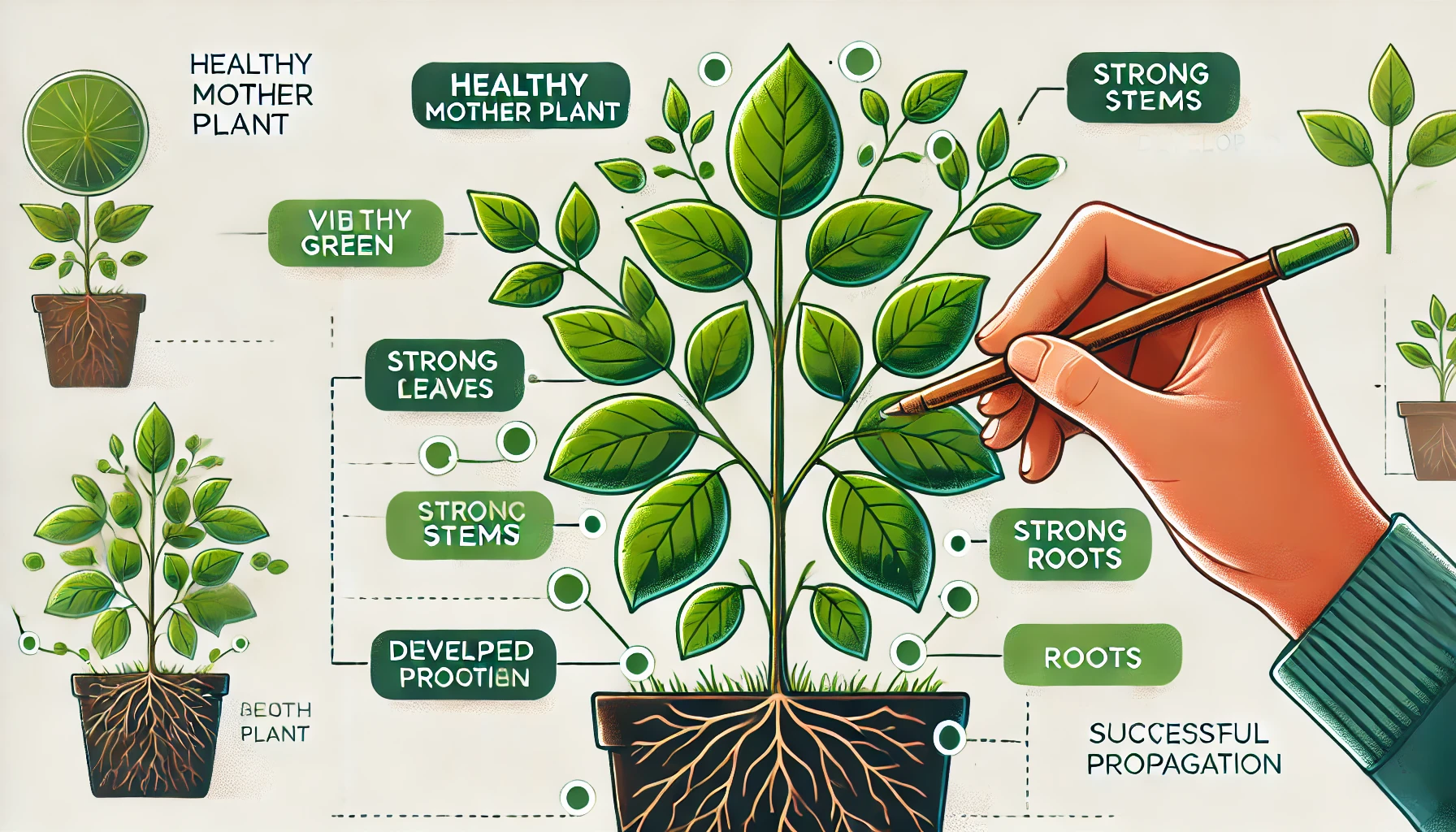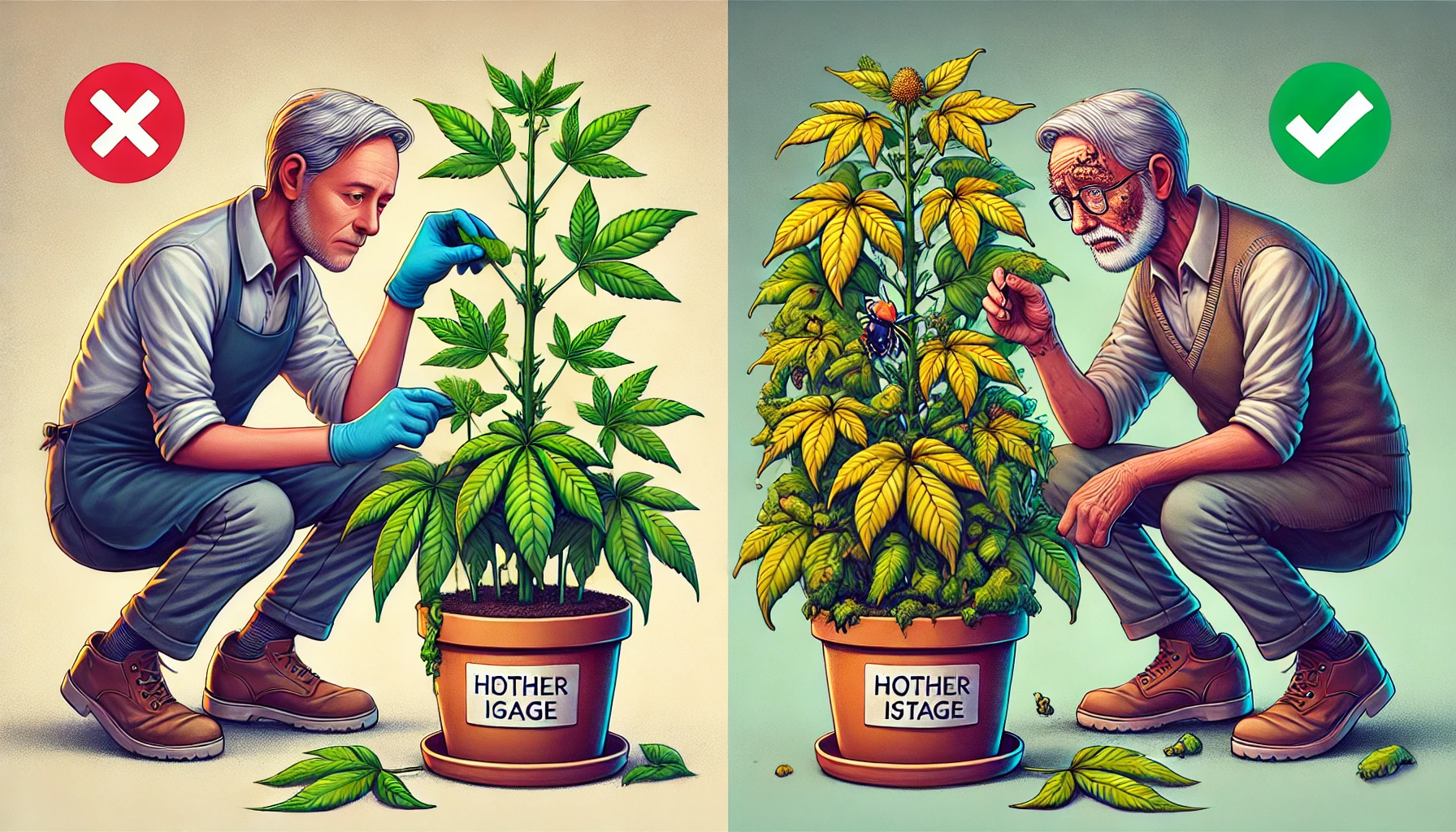
Leaf Node Identification for Cutting Success: Expert Tips for Healthy Plant Growth
When it comes to propagating plants from cuttings, leaf node identification for cutting success is key to ensuring strong, healthy growth. The process of taking cuttings can be an incredibly rewarding experience, but success hinges on knowing where to cut and understanding the role of each leaf node. In this article, we’ll guide you through expert tips on how to identify the right leaf nodes for successful propagation, helping you grow thriving plants from the best mother plants. Whether you’re a beginner or an experienced gardener, mastering this technique will elevate your gardening skills and lead to beautiful, flourishing plants.
Table of Contents
ToggleWhat Are Mother Plants?
Mother plants are the source from which gardeners propagate new plants. These plants are typically mature, healthy, and strong, serving as the foundation for creating clones or cuttings that will grow into identical replicas. The term “mother plant” refers to the parent plant from which offshoots, seeds, or other types of plant material are taken for propagation.

In gardening and horticulture, mother plants are highly valued because they ensure consistent and high-quality results. When you use a healthy, disease-free mother plant, you increase the chances of your new plants thriving. Common propagation methods from mother plants include cutting, grafting, or even tissue culture.
One key benefit of using mother plants is that they provide a reliable and stable genetic line, meaning the new plants will share the same characteristics, such as flower color, size, and growth habits. This makes mother plants especially useful for growing crops or ornamental plants where consistency is important.
Whether you’re a beginner or an experienced gardener, understanding the importance of mother plants can help you grow a successful, thriving garden.
Why Choosing Healthy Mother Plants is Crucial
Selecting a healthy mother plant is the cornerstone of successful propagation. A strong, well-established plant ensures that the new cuttings or seedlings will be vigorous and disease-free. Here’s why it’s so important:
Disease Prevention: A healthy mother plant is less likely to harbor pests or diseases. By choosing a disease-free plant, you reduce the risk of spreading these issues to new growth.

Better Growth and Development: Cuttings from a healthy plant are more likely to root quickly and grow into strong, resilient plants. The vigor of the mother plant directly impacts the success rate of propagation.
Consistent Quality: Starting with a healthy plant ensures that the offspring will have the same desirable traits, such as flower color, leaf shape, or growth habit. This consistency is especially important for maintaining garden aesthetics or crop production.
Stronger Roots: Healthy mother plants produce cuttings with strong root systems. This means the new plants will be more adaptable to different environments and less prone to stress.
Faster Recovery: When you start with a robust mother plant, the new cuttings are more likely to recover and thrive, reducing the overall time it takes to establish the new plant.
In summary, choosing a healthy mother plant is essential for successful propagation. It sets the foundation for producing strong, thriving plants with minimal effort and ensures you’re starting the process with the best possible materials.
Key Characteristics of Healthy Mother Plants
A healthy mother plant is the foundation for successful plant propagation. Identifying the signs of a strong, thriving mother plant ensures that your cuttings or offshoots will develop into healthy, robust plants themselves. Here are the key characteristics of a healthy mother plant:
Vibrant, Green Leaves
A healthy mother plant has lush, green foliage. Yellowing, wilting, or discolored leaves often signal nutrient deficiencies, pests, or stress. Healthy leaves indicate the plant is receiving proper care and is thriving.

Strong, Well-Developed Roots
The root system should be extensive and firm. If the plant is in a pot, gently check the roots to ensure they are white or light-colored and not root-bound or decaying. Healthy roots provide stability and essential nutrients to the plant.
Robust Stems and Branches
The stem or trunk of the plant should be thick, strong, and free of cracks. It should stand upright, supporting the weight of the plant without bending or breaking. Weak stems often indicate a lack of vigor or stress.
Even Growth and Symmetry
A healthy mother plant grows evenly, with balanced symmetry. If the plant appears lopsided or shows signs of stunted growth, it may be experiencing poor light conditions, improper watering, or pest issues.
Proper Pest Control
A healthy mother plant is free from pests and disease. Regularly inspect for any signs of infestations, like spots, holes, or webs. Healthy plants resist pests better, ensuring that cuttings taken from them are also pest-free.
Optimal Soil Moisture
The soil around the plant should be well-drained and moist but not soggy. Overwatering or underwatering can stress the plant, leading to root rot or dehydration. Consistent, balanced watering is essential for a healthy mother plant.
By focusing on these key characteristics, you can ensure that your mother plant remains strong and healthy, providing the best possible start for your propagation efforts.
How to Inspect and Select a Healthy Mother Plant
Selecting a healthy mother plant is crucial for successful propagation. Here’s how you can identify a strong, viable plant to take cuttings from:
Check for Overall Health: The mother plant should look vibrant, with no signs of disease, pests, or stress. Look for lush green leaves, strong stems, and no yellowing or browning, which can indicate poor health.

Examine the Roots: If possible, gently check the roots. Healthy roots should be firm, white or light tan, and free of rot. Avoid plants with dark, mushy roots, as they may struggle to propagate successfully.
Inspect for Pests: Always check the underside of leaves and stems for pests. Aphids, spider mites, or mealybugs can quickly spread to your cuttings. A healthy plant will be pest-free or have minimal signs of infestation.
Look for New Growth: A healthy mother plant will exhibit signs of active growth, such as new leaves or buds. These plants have a higher chance of producing healthy cuttings.
Avoid Overly Mature Plants: While mature plants may seem ideal, they can sometimes be overgrown and less likely to produce viable cuttings. Look for a plant that is mature enough to have established roots but not too old to show signs of weakening.
Choose the Right Variety: Different plants require different care, and some are more suitable for propagation than others. Ensure you’re selecting a plant variety known for successful propagation, such as those that root easily from cuttings.
By following these simple steps, you can confidently select a healthy mother plant that will produce strong and thriving cuttings.
The Best Time to Choose a Mother Plant
Choosing the right time to select your mother plant is crucial for ensuring healthy offspring and optimal growth. Here are some expert insights to help you make the best choice:
Ideal Growing Season: The best time to select a mother plant is during its peak growing season. For most plants, this is in the spring or early summer when they’re actively growing and most robust. During this time, the plant is full of energy, making it easier to take healthy cuttings or start new growth.

Plant Health: Always choose a mother plant that is healthy and free of pests or diseases. A stressed or weak plant will likely pass on these issues to the new plants, so look for one that is strong, vibrant, and thriving in its environment.
Mature but Not Overgrown: Select a plant that is mature enough to have a strong root system and plenty of healthy branches or leaves but not overgrown. Overgrown plants may have weak or leggy growth, which can negatively affect the cuttings you take from them.
Weather Considerations: If you’re working with outdoor plants, avoid selecting a mother plant during extreme weather conditions like heatwaves or frost. Such stressors can weaken the plant and make it harder to take successful cuttings.
By choosing the right time to select your mother plant, you’re setting yourself up for success in propagating healthy and strong new plants. Be mindful of the plant’s health, the growing season, and the weather to ensure the best results.
How to Care for Your Mother Plant
Caring for your mother plant is crucial to ensure it remains healthy and provides you with healthy cuttings for propagation. Here are the key steps to follow for optimal care:
Provide the Right Light
Mother plants thrive in bright, indirect light. Avoid direct sunlight, as it can scorch the leaves. If the plant starts to stretch toward the light, it may need more exposure.

Watering
Water your mother plant when the top inch of soil feels dry. Overwatering can lead to root rot, so ensure the pot has good drainage. Always allow excess water to drain out.
Fertilize Regularly
During the growing season (spring and summer), feed your mother plant with a balanced, water-soluble fertilizer every 4-6 weeks. This supports its growth and ensures healthy cuttings.
Prune to Promote Healthy Growth
Regular pruning not only keeps your mother plant looking tidy but also encourages new growth, which is essential for taking healthy cuttings. Remove any dead or yellowing leaves and trim back any long, leggy stems.
Maintain Humidity
Most mother plants thrive in moderate to high humidity. If your home is dry, consider using a humidifier or placing the plant on a pebble tray filled with water.
Repot When Needed
As your mother plant grows, it may outgrow its pot. Repotting it into a slightly larger container every 1-2 years ensures the roots have enough space to develop and helps prevent root-bound issues.
By following these care guidelines, your mother plant will remain healthy, providing you with an ongoing supply of strong and vibrant cuttings for propagation.
Common Mistakes to Avoid When Choosing a Mother Plant
Choosing the right mother plant is crucial for successful propagation, but many gardeners make common mistakes that can hinder their results. Here are the most important errors to avoid:
Selecting an Unhealthy Plant
One of the biggest mistakes is using a sick or stressed plant as the mother plant. Propagating from an unhealthy plant can lead to weak or diseased offspring. Always choose a healthy, robust plant with no signs of pests or disease.

Ignoring the Plant’s Growth Stage
Propagating from a plant in the wrong growth stage can cause poor results. Avoid selecting a plant that’s too young or too old. The ideal time is when the plant is in its prime, usually during its active growing season.
Overlooking Genetic Compatibility
Not all plants are suited for cloning, especially if they are hybrid varieties. Always ensure that the plant you’re choosing is genetically compatible with propagation methods like cuttings or grafting to maintain the desired traits.
Using Too Many Cuttings
While it may seem tempting to take multiple cuttings from a single mother plant, taking too many can stress the plant and slow down its recovery. Limit the number of cuttings to avoid harming the mother plant’s health.
Neglecting Proper Tools
Using dull or dirty tools can introduce infections or cause poor cuts that hinder propagation. Always use sharp, sanitized scissors or pruning shears to ensure clean cuts.
Inadequate Light and Environment
After selecting your mother plant, make sure to propagate in the right environment. Insufficient light or improper humidity levels can lead to failure. Ensure the area is warm, well-lit, and provides the right conditions for rooting.
Failing to Monitor Growth
Even after propagating, many gardeners forget to monitor the growth of the new plants. Check regularly for signs of disease, dehydration, or slow growth. Staying vigilant will help catch problems early and keep your new plants healthy.
By avoiding these common mistakes, you’ll increase your chances of success when choosing a mother plant for propagation. Taking the time to understand these factors ensures healthier plants and better results in your gardening efforts.
Choosing healthy mother plants is the foundation of successful plant propagation. By selecting plants that are strong, well-maintained, and free from pests or diseases, you set yourself up for a garden filled with thriving, vibrant plants. Remember, a healthy mother plant provides the best possible genetic material for new growth, ensuring your cuttings or grafts will be just as strong and resilient. With the expert tips shared in this article, you now have the knowledge to confidently select and care for your mother plants. Happy gardening, and may your plants grow strong, healthy, and full of life!
Frequently Asked Questions(FAQ)
What is a leaf node, and why is it important for cuttings?
A leaf node is the point on a plant stem where leaves, branches, or buds emerge. Identifying the right leaf node is crucial for successful cuttings, as it is the site where new roots and shoots will develop. Proper node selection ensures your cuttings grow strong and healthy.
How do I identify a healthy leaf node for cuttings?
A healthy leaf node is typically firm and free of damage or disease. Look for nodes that are slightly swollen or have visible buds or shoots emerging. These are the ideal places to take cuttings, as they have the highest potential for root development.
Can I take a cutting from any part of the plant?
Not all parts of a plant are suitable for cuttings. The best cuttings come from healthy, mature stems that include a leaf node. Avoid taking cuttings from stressed or diseased areas of the plant, as they are less likely to root and thrive.
How many leaf nodes should I leave on my cutting?
For most plants, a cutting should have at least one or two leaf nodes. The more nodes on your cutting, the better the chances for successful rooting. Be sure to remove the leaves from the lower node (below the soil level) to prevent rotting while allowing the upper leaves to remain.
When is the best time to take cuttings from a plant?
The best time to take cuttings is typically during the active growing season, usually in spring or early summer. This is when plants are healthiest, and the cuttings have the highest chance of successful rooting. However, some plants can be propagated in the fall or winter, depending on the species.
How can I promote rooting at the leaf node?
To encourage rooting, dip the leaf node in rooting hormone before planting it in soil or water. This helps stimulate root growth. Additionally, ensure the cutting is kept in a humid environment with indirect light and adequate moisture to support root development.
Can leaf node identification affect the success of my cuttings?
Yes! Proper leaf node identification is vital for cutting success. Choosing a node with strong, healthy tissue significantly increases the chances of your cutting developing roots and growing into a healthy plant. Avoid taking cuttings from weak or damaged nodes to improve success rates.
What happens if I cut the wrong part of the plant?
Cutting the wrong part of the plant, such as a leaf or a damaged node, can lead to poor rooting or no growth at all. It’s essential to identify the right leaf nodes with strong growth potential, ensuring the cutting has the best chance of developing healthy roots.
